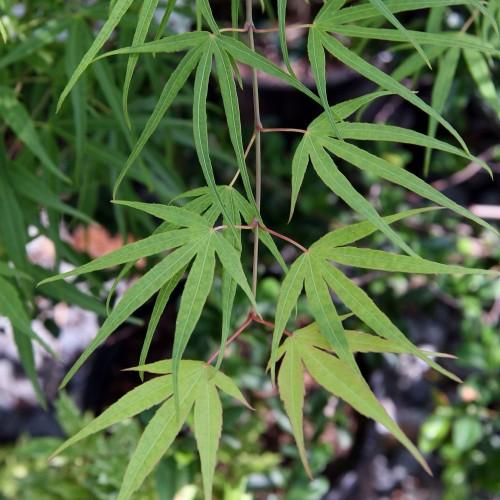
Ao Shime No Uchi Japanese Maple
Acer palmatum 'Ao Shime No Uchi'
Cycle:
Perennial
Watering:
Frequent
Hardiness Zone:
6
Sun:
full sun,part shade
Leaf:
Yes
Growth Rate:
Low
Care Level:
Medium
watering
The Ao Shime No Uchi Japanese Maple likes moist soil and should be watered well during the growing season, approximately once a week or as needed. In the heat of summer, when temperatures rise, water more frequently. In the winter, water only when the soil is almost dry, about once every 3 weeks. During the growing season, it is important to avoid overwatering, as this can lead to root rot.
sunlight
Ao Shime No Uchi Japanese Maple (Acer Palmatum 'Ao Shime No Uchi') prefers bright, indirect sunlight and preferably at least 6 hours of daily exposure throughout the growing season. This plant species should ideally be placed in a spot that gets some direct sunlight, such as in front of an east or west window, but should be shaded from direct midday or afternoon sun which can cause leaf burn or sun scald.
pruning
Ao Shime No Uchi Japanese Maple is a beautiful and graceful tree that is low maintenance and easy to grow. However, pruning is an important part of keeping this species of maple healthy and attractive. Pruning should be done in late winter or early spring, right before the tree begins to bloom. Prune back no more than a third of the branches, as over-pruning can damage the tree. Be sure to use sharp pruners and cut at a point just above a leaf bud. Pruning away old, dead, or diseased branches will help promote healthy new growth.
